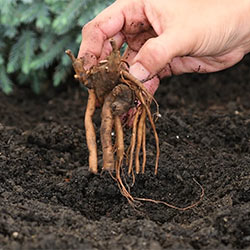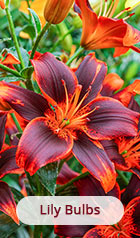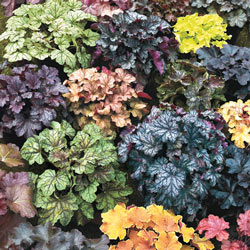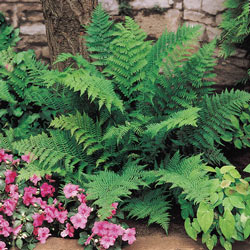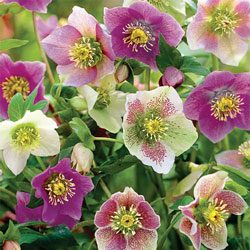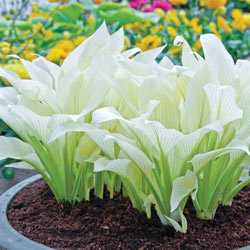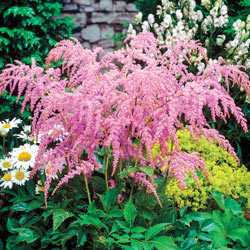Shade flowers even have eye-catching blooms in addition to their attractive foliage that can last all season long. Best of all, many of these varieties of plants for shade are low maintenance, requiring little care outside of occasional watering. If you're a gardening pro, or just getting started with gardening, our shady plants will meet your needs. Browse our large selection of the best shade plants today to add texture, color, and contrast to your garden. If you'd like more guidance on which shade plant to add to your garden, check out our
blog on shade perennials.
How to care for your shade plant?
To keep a successful shade garden, use plants that really do tolerate shade--forcing sunny perennials into shady spots is a recipe for unhappy blooms and spindly stems. However, plenty of shade plants are available for your darker garden locations, in a wide range of heights, spreads, colors, and textures. Consider the amount of shade when choosing your plants, and whether your planting site is truly dark or receives dappled sunlight.
Shade plants are known for their un-finicky nature and their tolerance of low-light conditions. Shade plants can be a bit needy when it comes to moisture—luckily, shady sites tend to retain moisture more readily than sunny ones. In dry periods, water your shade garden once per week, especially if the shade comes from a rain-blocking shelter, like a roof or tree. Provide your shade plants with at least one inch of water each time you soak them. To avoid wet leaves, water at the base of the plant or use a soaker hose, and water in the morning instead of the evening. Consistently damp foliage could lead to moldy growth, mildew, fungus or decay.
Speaking of mold and fungus, be sure to control the moisture around the base of your shade plants at all times. Use mulch to mitigate fungal growth and pests, but don't pile mulch too high up the stems of your plants. Rake debris and dead leaves away from your shade garden regularly to avoid leaving a breeding ground for mold, mites, and other pests.
Many shade plants prefer rich, organic soil, so fertilization is important. Each spring, provide a balanced fertilizer as part of your watering routine. Amending the soil with compost is also a great way to provide valuable nutrients to your plants.
What type of soil do shade plants need?
The type of soil needed for your shade plants is dependent upon variety. Some shade plants, such as coral bells and hosta, can tolerate poor soil quality, and even pollution, making them perfect for rocky soils and urban areas. However, most shade plants prefer rich, fertile soil, which can be troubling in a garden that may have trees, shrubs, and nearby sun perennials competing for nutrients in the soil. Apply a balanced fertilizer in the spring, and consider dressing your shade garden in compost before laying out winter mulch. If you find that your shade plants seem to be wilting or weak, check your soil with a home test or contact your local extension office for help.
Can shade plants be grown indoors?
It is definitely possible to grow your favorite shade plants, like hosta or caladium, indoors. However, shade plants grown indoors require a bit of extra care to ensure their needs are met. Shade plants need good drainage, so choose a pot with adequate drainage holes, and use standard potting soil. Once your shade plants have been potted, ensure that the soil is consistently moist. So, don't allow the soil to become more than slightly dry. Water from the base of the plant, and provide regular feedings with a food that is shade plant appropriate. Many shade plants, such as hosta, tend to grow in large clumps, so you may need to divide your potted houseplants every year or so.
What are good groundcovers for shade areas?
Shady areas aren't great for grass, but you can make the shady spots in your landscape into the highlights of your yard with ground cover. Ivies, low-growing ferns, and hellebores fill in those shade spots with woodland beauty. Or, try planting a shorter hosta, like Mouse Ears, as a low-growing plant that provides cover to a large area. Heuchera, widow's tears, or even a groundcover dogwood can make for a colorful, low-growing display. Shade plants tend to be on the shorter side, so there are plenty of shady options available for your ground cover needs.
When is the best time to plant shade perennials?
Most shade perennials should be planted in spring, after all threat of frost has passed. Shade perennials do not require a period of cold to start growing, in the same way that bulbs do, so springtime planting allows them to "wake up" in their new location.
